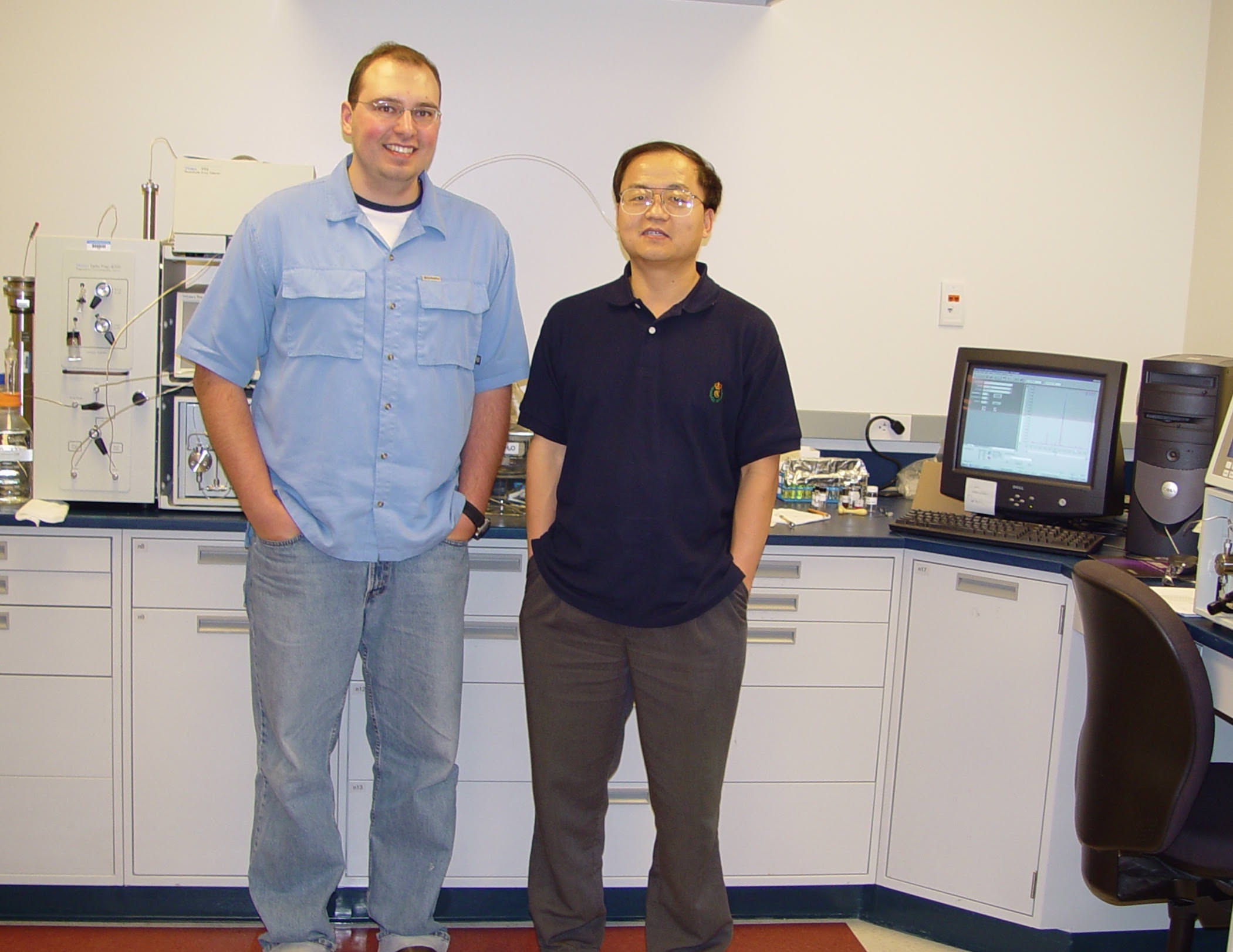Zhenjun “Jack” Diwu, founder, President, and CEO of AAT Bioquest, grew up in Xianyang, a small city close to Xi’an, the capital city of Shaanxi Province in China. Xianyang is situated on the north bank of the Wei River about 12 miles northwest of Xi’an, in an area that was the cradle of early Chinese civilization. Its historical importance began with the Qin state. All of China was united under the Qin dynasty (221–207 BCE) for the first time in Chinese history. “My early interest in Chinese history, literature, and political science might be related to the rich history of my birth place,” he shares. In his younger years, Diwu was much more interested in these subjects than in science, which may have had as much to do with his natural curiosity as it did the larger cultural moment in which he was growing up. “The entire Chinese society was ignoring the natural sciences at the time,” he says. “I started to have a strong interest in science and engineering once Xiaoping Deng started his reform in China. Before Deng’s reform, there were few opportunities in science and technologies in China. Scientists and educators were unfairly treated in China in the 1970s, which had a very negative influence on my earlier interests in science as it did on other young people of my generation.”
After Deng had begun his education system reform in the late 1970s, Diwu was enrolled into Northwest University in Xian, China. He was assigned to the Department of Chemistry, though he had a stronger interest in math and engineering. “You must go with your assignment by the government at the time in China, thus I started my scientific career with chemistry. When I started my chemistry major with Northwest University in 1980, I might have had the poorest scores among all my classmates,” he says. “Fortunately, I started to have a strong interest in chemistry, and thus I quickly caught up with my grades. By the time of my college graduation in 1984, I had become one of the top students.”
That same year, he enrolled in graduate school at the Chinese Academy of Sciences in Beijing. At this prestigious research institution, Diwu had access to many resources he had not been able to access at Northwest University. He read multiple newspapers each day, and one day in the Guangming Daily came across an intriguing article about Linjin Jiang’s research on photobiology. This proved to be fortuitous, and he began his biophysics career in Jiang’s lab. “Her lab research focused on photochemistry, photophysics, and photobiology,” he says. “My strong background in math and chemistry played a significant role in my early success in her lab.” He studied the phototherapeutic mechanism of hyporcrellins, a group of natural pigments isolated from a fungus grown in Yunnan Province, China.
Following completion of his PhD in 1988, Diwu wanted to continue this research, and sought out a postdoctoral position with William Lown at University of Alberta in Edmonton, Canada. In his first year there, he focused on investigating the essential photophysical and biological properties of perylenequinoid compounds. “Some of exceptional properties of hypocrellin B discovered in Dr. Lown’s lab were particularly intriguing. We decided to explore its phototherapeutic potential in my last two years of postdoctoral work,” he explains. Over the next two years, his priority was to explore the anti-cancer applications of hypocrellin B by collaborating with the Cross Cancer Institute in Edmonton. A pharmaceutical company, SonoLight Pharmaceutical, was formed based on Diwu’s research, in order to further explore the commercial potential of the light-activated or ultrasound-activated anticancer and anti-HIV applications of hypocrellin B. Later, SonoLight merged with Alta Pharma to form Quest Pharmaceuticals, which is still actively exploring the various applications of hypocrellin B and its derivatives for anticancer, antiviral, and cosmetic applications.
One day during his time in Lown’s lab, Diwu was reading a business journal that featured a report on a small biotechnology firm, Molecular Probes, based in Eugene, Oregon. “The article reminded me my deep interest in fluorescence. I decided to write to Dr. Richard Haugland, the founder and president of Molecular Probes. To my surprise Dr. Haugland immediately wrote me back with an invitation for an on-site job interview.
I got a job offer from Molecular Probes in about three weeks,” he shares. “At the time, it was hard for me to leave the hypocrellin research project on which we had made significant progress that resulted in big funding from Canada Research Council and Alberta Heritage Foundation; however, I wanted so much to try something new, and therefore, I decided to join Molecular Probes. It turned out that my decision did not disappoint me. Dr. Haugland’s immense knowledge and passion for science deeply impressed me. I had chances to exchange ideas and discuss research projects all the time.”
In 1996, Nobel laureate Roger Tsien visited Molecular Probes and gave a lecture on fluorescent probes and their applications. “I was lucky to have a dinner with Dr. Tsien, who mentioned the story of Fluo-3 discovery. I admired his brilliant idea to invent Fluo-3 based on the prototype calcium ion indicator, EGTA,” he says. “Since then, I have had a strong interest in developing fluorescent probes for calcium detections, which led to [AAT Bioquest’s] recent development of the best calcium probes on the market such as Cal-520® and Calbryte-520.”
Diwu left Molecular Probes in 2000 for Molecular Devices, after becoming interested in the company’s calcium detection-dedicated FLIPR instrument. “At the time it was the only instrument that could kinetically read calcium signals in a high throughput mode due to its outstanding liquid handling and fast reading capability,” he explains. “I had a strong interest in learning the integration of fluorescence detection reagents and systems. I contacted Molecular Devices for a job opportunity and was luckily offered the Director of Chemistry. We successfully developed the first generation of FLIPR calcium assay kits for the high throughput screeening (HTS) market; these products quickly became the gold standard in the HTS market.”
In 2006 he founded AAT Bioquest, a small biotech company. “We love to see our products being used to advance biophysical and other scientific research. Our research and development in calcium detection is a great example. Influenced by Dr. Tsien’s talk at Molecular Probes, I have been passionate to improve calcium detection by providing more effective tools to scientists since calcium detection is essential and important for cellular communications and signal transduction,” he shares. “By AAT Bioquest’s second year, we had introduced our first calcium product, Fluo-8®. Following our early success of Fluo-8, we introduced the follow-up calcium detection products, Cal-520® and Calbryte™-520 that have far superior properties than the earlier calcium dyes such as Fluo-3 and Fluo-4. AAT Bioquest is investing more than half of its revenue back to research projects. Our current focus is to develop infrared calcium detection products that enable calcium imaging with live animals, a rapidly growing research area, but limited by the availability of infrared fluorescent detection reagents.”
Throughout his career, Diwu has followed his passions, and advises young scientists to do the same: “If you are interested in what you do and passionate about your projects, you always feel energetic and actively pursue it with a great chance to succeed. No matter what results you get you always feel happy. If there is a better opportunity, do a good analysis before you make your final decision. There is nothing wrong with changing direction or making some adjustments as long as you are well prepared.”